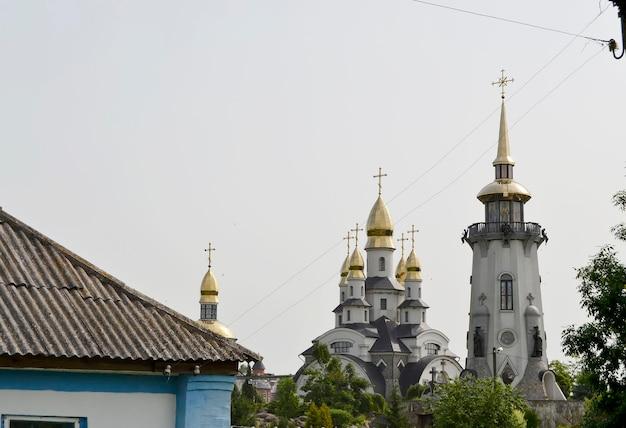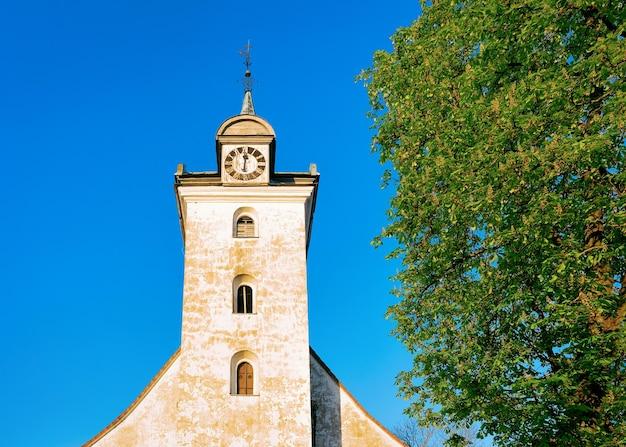Eastern Orthodox and Western Christianity, despite sharing a common foundation, have evolved into distinct branches with unique practices and beliefs. While both branches follow the teachings of Jesus Christ, their rich and complex histories have led to significant divergences in theology, worship styles, and religious traditions. In this blog post, we will examine the major differences between Eastern Orthodox and Western Christianity, shedding light on key aspects such as their origins, relationship with the Roman Catholic Church, usage of the Bible, and the percentage of believers they represent in the world today.
So, if you’ve ever wondered why Eastern Orthodox and Western Christian churches have some different practices and beliefs, or if you’re curious about the historical context behind their divergence, this blog post will provide you with a comprehensive understanding. Join us as we embark on an exploration of the fascinating distinctions between Eastern Orthodox and Western Christianity and gain insights into the diverse religious landscapes that have shaped our world.

What Sets Eastern Orthodox and Western Christianity Apart
Christianity, with its various denominations and branches, offers a rich tapestry of diversity and theological perspectives. Two significant branches, Eastern Orthodox and Western Christianity, have evolved over centuries, resulting in distinctive beliefs, practices, and even a touch of friendly rivalry. Let’s explore the major differences between these two fascinating traditions!
1. Authority and Papal Primacy
In Eastern Orthodox Christianity, authority rests primarily on the conciliar model, emphasizing the collective decision-making of bishops. While recognizing the authority of the Bishop of Rome (the Pope), Eastern Orthodox Christians do not consider him to possess ultimate supremacy over the Church. In contrast, Western Christianity places a higher emphasis on the Pope’s authority, believing that he holds the Keys of the Kingdom, a direct succession from the Apostle Peter.
2. The Filioque Controversy
Ah, the Filioque controversy—a fancy term for an age-old debate. Here’s the gist: in the Nicene Creed, the phrase “and the Son” (Filioque in Latin) was added to the Western version of the creed, stating that the Holy Spirit proceeds from both the Father and the Son. This seemingly innocuous addition caused quite a stir in the East, as the original creed agreed upon by the Ecumenical Councils did not include it. The disagreement over this theological nuance is still a distinguishing factor between the Eastern Orthodox and Western Christian traditions.
3. Liturgical Practices and Worship
When it comes to worship, both traditions involve rich ceremonies, chanting, and incense. However, Eastern Orthodox liturgies tend to be more ornate, with lavish icons, mystically captivating chants, and an emphasis on theosis (the concept of becoming one with God). Western Christianity, on the other hand, is known for its intricate choral music, stained glass windows, and its use of statues and religious images to depict saints and biblical scenes.
4. Sacraments: Seven vs. Seven Plus One
Hold on to your hats, because things are about to get sacramental! Both Eastern Orthodox and Western Christianity share the belief in seven sacraments: baptism, confirmation, Eucharist, penance, anointing of the sick, holy orders, and matrimony. However, Western Christianity throws a curveball (and an extra sacrament) with the inclusion of the sacrament of extreme unction, also known as the last rites. Eastern Orthodox Christians view this ritual as a component of their sacrament of anointing the sick.
5. Language: The Tongue Twister
While both branches historically used Greek for theological discussions, they gradually diverged in terms of predominant language. Eastern Orthodox liturgy still maintains Greek as a liturgical language, whereas the majority of Western Christianity transitioned from Latin to vernacular languages like English, Spanish, and German. So, if you’ve ever tried to follow along with a Greek Orthodox service and felt like you were in a linguistic labyrinth, fear not—it happens to the best of us!
6. Loaf or Leavened Bread? The Holy Conundrum
In a communion showdown, bread takes center stage. Eastern Orthodox Christians use leavened bread for the Eucharist, believing it symbolizes the risen Christ. Western Christianity predominantly employs unleavened bread as a representation of the body of Jesus. So, there you have it—an eternal debate over yeast, proving that even in matters of faith, dough is serious business!
7. The Bearded Clergy: Fashion Statement or Religious Depth
While this may not be a critical theological difference, it’s worth mentioning for its humorous undertones. In Eastern Orthodox Christianity, the clergy—bishops, priests, and deacons—traditionally grow full beards as a symbol of sanctity and a connection to the ancient tradition of the Church. In Western Christianity, beards have come in and out of fashion throughout history, leaving the decision of facial hair up to the personal taste of individual clergy members. So, if you ever need a clear indicator of someone’s religious affiliation, just take a quick glance at their chin!
In summary, Eastern Orthodox and Western Christianity may share a common foundation in Christ, but their differences offer unique perspectives and practices within the broader Christian faith. From questions of authority and language to liturgical practices and bread preferences, these distinctions contribute to the colorful tapestry of Christianity’s diverse expressions. So, whether you find yourself admiring the beauty of Eastern Orthodox icons or enjoying the awe-inspiring stained glass windows of Western churches, remember to appreciate the wealth of traditions that make Christianity a fascinating journey through time.

FAQ: What are the Major Differences Between Eastern Orthodox and Western Christianity
Who Started the Eastern Orthodox Church
The Eastern Orthodox Church traces its roots back to the apostles, specifically to the early Christian communities in Byzantium (now Istanbul) and other regions of the Eastern Roman Empire. However, it formally separated from Western Christianity in the 11th century, following the Great Schism.
What is a Major Difference Between the Eastern Orthodox Church and the Roman Catholic Church
One major difference between the Eastern Orthodox Church and the Roman Catholic Church is the belief in the authority of the Pope. While Roman Catholics recognize the Pope as the head of the Church and infallible in matters of doctrine, Eastern Orthodox Christians regard him as the first among equals and do not attribute the same level of authority to him.
What Bible does the Eastern Orthodox Church Use
The Eastern Orthodox Church primarily uses the Septuagint, a Greek translation of the Old Testament, in their liturgical services and for spiritual readings. This differs from Western Christianity, which typically relies on the Masoretic Text as the basis for their Old Testament.
Which Countries Have the Most Orthodox Christians
As of 2023, the countries with the largest Orthodox Christian populations include Russia, Ukraine, Greece, Romania, and Serbia. However, Eastern Orthodoxy can be found in many other countries around the world, including the United States.
What are the Major Differences Between Eastern Orthodox and Western Christianity
Eastern Orthodox Christianity and Western Christianity (represented primarily by Roman Catholicism and Protestantism) differ in various aspects. Some of the major differences include the structure and authority of the Church, the interpretation of Scripture, the emphasis on mysticism and symbolism, as well as certain theological beliefs and practices.
How Old was Mary when Jesus was Eastern Orthodox
The Eastern Orthodox Church does not provide specific details about the age of Mary when Jesus was born. However, Christian tradition generally holds that Mary was a young woman, possibly in her early teens, at the time of the Annunciation and the birth of Jesus.
What is the Current Relationship Between the Orthodox and Catholic Churches
The relationship between the Eastern Orthodox and Catholic Churches has been marked by both dialogue and division. Despite efforts towards reconciliation, the Great Schism of 1054 still stands, separating the two branches of Christianity. However, in recent years, there have been positive steps taken towards greater understanding and cooperation between the two communities.
What Percentage of Christianity is Eastern Orthodox
While there is no exact percentage, it is estimated that Eastern Orthodoxy represents around 12% of the global Christian population. However, the distribution of Orthodox Christians varies across different regions and countries.
What is the Difference Between Greek Orthodox and Eastern Orthodox
The term “Greek Orthodox” refers specifically to the Eastern Orthodox Church in Greece, which is one of the largest and most prominent autocephalous (self-governing) churches within Eastern Orthodoxy. On the other hand, “Eastern Orthodox” encompasses the broader body of Orthodox churches from various ethnic backgrounds, such as Russian Orthodox, Serbian Orthodox, or Ukrainian Orthodox.
Are Catholic and Eastern Orthodox the Same
No, Catholicism and Eastern Orthodoxy are not the same. While both are branches of Christianity, they differ in terms of liturgical practices, beliefs regarding the Pope’s authority, theological emphases, and historical development.
By addressing these frequently asked questions, you can gain a better understanding of the major differences between Eastern Orthodox and Western Christianity. Whether it’s the historical origins, theological distinctions, or demographics of Orthodox Christianity, exploring these aspects will enhance your appreciation for the rich tapestry of religious diversity in the world today.
Please note that the information provided in this article is for general informational purposes only and should not be taken as religious advice or a comprehensive analysis of Eastern Orthodoxy and Western Christianity.
